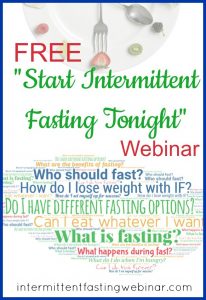For optimal viewing on a mobile device, tilt your device to landscape mode.
Slideshow: 5 Tips for Being, Helping, and Linking Verbs From Language Lady
#1
Being, Helping, and Linking Verbs Can Be Learned All Together Because They Act Like Each Other.
Many grammar handbooks say that there are 8 true being verbs (is, are, am was, were, etc). Then the same handbook will say that there are 23 helping verbs ( the being verbs are on that list as well). Finally, it will say that linking verbs are the “sense” verbs plus the being verbs. That is a lot of confusion for students and teachers alike.
I like to teach parts of speech from the perspective of usage. That is, I like to teach them according to how a student will use them in writing. In that way, I group being, helping, and linking verbs together for students to learn. They all do the same things (link or help). The ones that are “helpers” are not going to be confused with the ones that are linking only. (A student will not try to use REMAIN in place of WAS in the verb phrase WAS GOING!) Being and linking verbs all ACT the same: (1) They link the subject with the predicate; (2) They do not have adverbs with them; (3) They can have adjectives with them; (4) They can have predicate adjectives or predicate nominatives with them when they are the sole verb (I feel happy. I am a teacher.) Since they all act alike, they can be learned together. (I call these Be, a Helper, Link! {BHL} verbs!)
#2
BHL Verbs Can Be Used as Helping Verbs to Tell WHEN Something Happened.
When a BHL verb comes before another verb (another BHL verb or an action verb), it is acting as a HELPING verb–helping the base verb by telling when something happened. This is one of the major uses for BHL verbs and one of the reasons it is important to learn how to use them with other base verbs (the verbs that follow the helper).
When a base verb follows has, had, or have (and oftentimes was and were), it should be in its past participle tense. This is a very tricky concept that should be taught slowly and incrementally.
a. has written
b. had gone
c. have done
d. had lain
e. has risen
f. have come
#3
BHL Verbs That Are Used Alone In Your Writing Can Be Located Easily and Changed to Strong Verbs So That Your Writing Is Not Passive.
In my writing books, we have a task in which students circle all of their verbs in their writing then change at least one per paragraph to a stronger verb. (This is in my Checklist Challenge.) This is an amazing exercise in itself as it teaches students to be aware of their verb choices.
In my story writing books, I take this one step further and have students find their solo BHL verbs and remove them, making the sentence an action-driven sentence rather than a passive sentence. For example, in the sentence “The water was on the wall,” they take out was and change the sentence to “The water trickled down the rough cave wall.” Simply understanding and finding solo BHL verbs can have a huge impact on story writing.
#4
Sometimes BHL Verbs Can Be Used as Action Verbs.
There are exceptions in all of English! (Poor students!) Not all LY words are adverbs (lovely); not all double negatives are wrong (in compound sentences); and BHL verbs are sometimes action verbs! There are two rules of thumb to tell when this is happening: (1) BHL verbs usually have adjectives following them (if they have describers): He is TALL. When you really need an adverb, not an adjective, you’ll know that your BHL verb is really acting like an action verb.
The second rule of thumb is as follows: (2) When you do the task physically, the BHL verb might be an action verb: I DID the job well. (There’s that adverb again too!) I FEEL the snake on my foot in the water! (Feel it physically.) It is important to be able to tell when a BHL is being a BHL and when it is being an action verb because everything changes–the adverb vs. adjective; a direct object vs. a predicate nominative, etc.
#5
Being, Helping, and Linking Verbs Can Be Learned All Together Easily and Quickly.
Songs, jingles, rhymes, and mnemonics together comprise one of the three legs I use to teach grammar. (The other two are learning them in a way that tells the parts of speech’s use {Check Sentences} and applying them to writing through my Checklist Challenge.) I use my BHL Verb Song (Be a Helper, Link Verbs) to teach the 32 BHL Verbs. It is sung to the tune of “ABC” or “Twinkle, Twinkle, Little Star.”
ABCDEFG
Be, a Helper, Link verbs,
HIJKLMNOP
Is, Are, Am, Was, & Were.
QRSTUV
Be, & Being, Been, Become,
WXYZ
Has, & Had, & Have are ones.
Now I said my ABC’s
Can, Could, Shall, Should—they are fun.
Will, Would, Do, Did, Does, & Done.
ABCDEFG
HIJKLMNOP
Appear, Look, Seem, Remain, Taste, Feel, & Smell.
Thanks for Joining Donna to Learn About Grammar and Writing!
Check Out Other “5 Tips From Language Lady” slideshows!
5 Places to Find Language Lady/Donna Reish Teaching Grammar and Writing
Learn More About Topics in This Slideshow
1) Checklist Challenge https://characterinkblog.com/?
2) Think Fast Grammar Quiz: https://characterinkstore.com/
3) Past Participles: https://characterinkblog.com/
4) BHL Verb Tricky Trick Sheet Download
5) Practice Usage Skills With https://characterinkblog.com/
6) The Write Right Quick Kit: https://characterinkstore.com/



